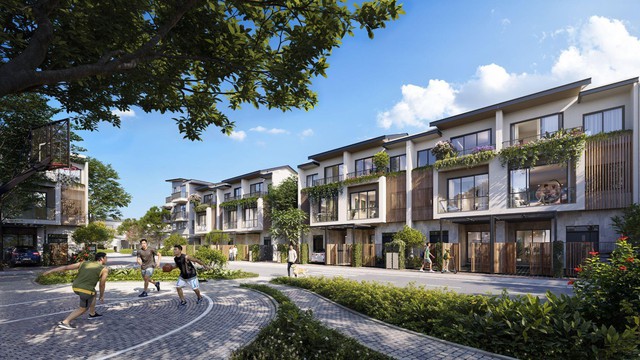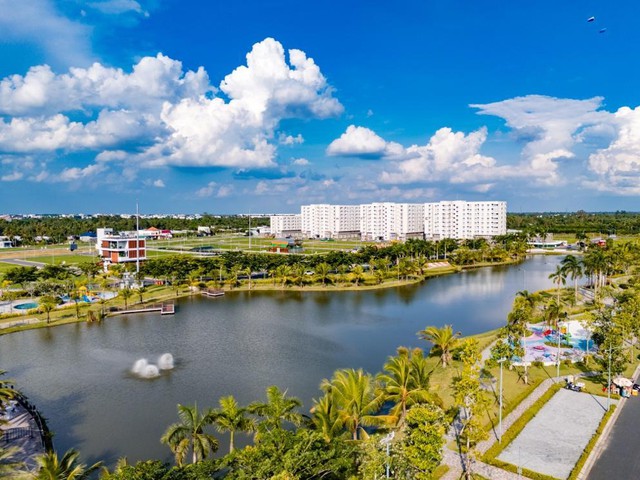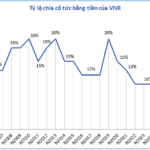Land Ownership Made Easy with Flexible Financial Policies
According to the amended Law on Real Estate Business, urban areas of types I, II, and III, including Can Tho, will no longer allow land subdivision for sale. This has made legally compliant land plots with favorable locations increasingly scarce. Since the fourth quarter of 2024, many investors have started “hunting” for land, anticipating its potential.
One of the rare legally compliant land plot projects introduced to the market at this time is Nam Long II Central Lake. With prices starting from only 1 billion VND and flexible financial policies, Nam Long II Central Lake offers an ideal opportunity for customers looking for long-term residence and investment. Customers who purchase the product at this time will enjoy a payment discount of up to 13%, bank loans up to 65% of the product value, and interest-free for 24 months.
Additionally, a crucial factor enhancing the project’s appeal is its transparent and trustworthy legal framework, backed by Nam Long, a reputable developer with 33 years of experience in urban development in Vietnam.
Strategically located in the center of Cai Rang district, adjacent to Ninh Kieu district, and directly connected to the Nam Song Hau axis, Nam Long II Central Lake (Nam Long 2 Residential Area (Lot 9A) of Nam Can Tho Urban Area, Hung Thanh ward, Cai Rang district, Can Tho city) holds a pivotal position in the region’s urban development network.
Covering an area of 43.8 hectares, over 60% of the urban area is dedicated to green spaces, water bodies, and public utilities. From the 3-hectare central lake park, more than 30 internal utilities to the land fund for schools, healthcare, and commercial purposes, everything is scientifically and seamlessly integrated into the overall architecture, bearing the local signature of the water region and the philosophy of sustainable development.

Own Nam Long II Central Lake products with flexible financial policies
Inter-regional Planning Gives New Impetus to Urban Land
According to a report by the Can Tho Real Estate Association, land prices in the city have increased by 5-8% compared to the same period last year, especially since the second quarter of 2024. Some central areas are expected to see price increases of up to 15-20% this year. In addition to the scarce supply, a series of significant changes in planning, inter-regional infrastructure, and legal policies have also impacted the price increase of this type of real estate.
The most notable is the proposal to merge Can Tho, Hau Giang, and Soc Trang, shaping a “new Can Tho” with an expanded scale and modern, sustainable planning vision. In this new urban structure, functional centers, satellite towns, and linked development areas will emerge, contributing to enhancing the urban landscape, quality of life, and competitiveness of the entire region.
Infrastructure remains the most critical driver for the development of the city and the real estate market of Tay Do. National-level projects nearing completion, such as the Chau Doc-Can Tho-Soc Trang expressway and the Can Tho-Ca Mau expressway, along with several other strategic transportation projects, are being expedited.
Among these, the Ho Chi Minh City-Can Tho railway, expected to commence construction in 2027, and the Can Tho-Ca Mau railway, in the preparation phase, will play a vital inter-regional role. Projects to upgrade Can Tho International Airport and the Nam Song Hau route connecting Cai Rang area with logistics waterways are gradually completing the multi-modal connectivity system, expanding urban space, attracting residents, and triggering a cycle of real estate price increases.

Nam Long II Central Lake is well-planned with transparent legal framework
In this context, projects with meticulous planning and transparent legal frameworks, such as Nam Long II Central Lake, which directly benefits from the infrastructure development wave, become the focal point for investment, offering attractive potential for price appreciation in the medium and long term. They are also valuable investments amidst the new growth cycle of the real estate market in the Southwest region.









































